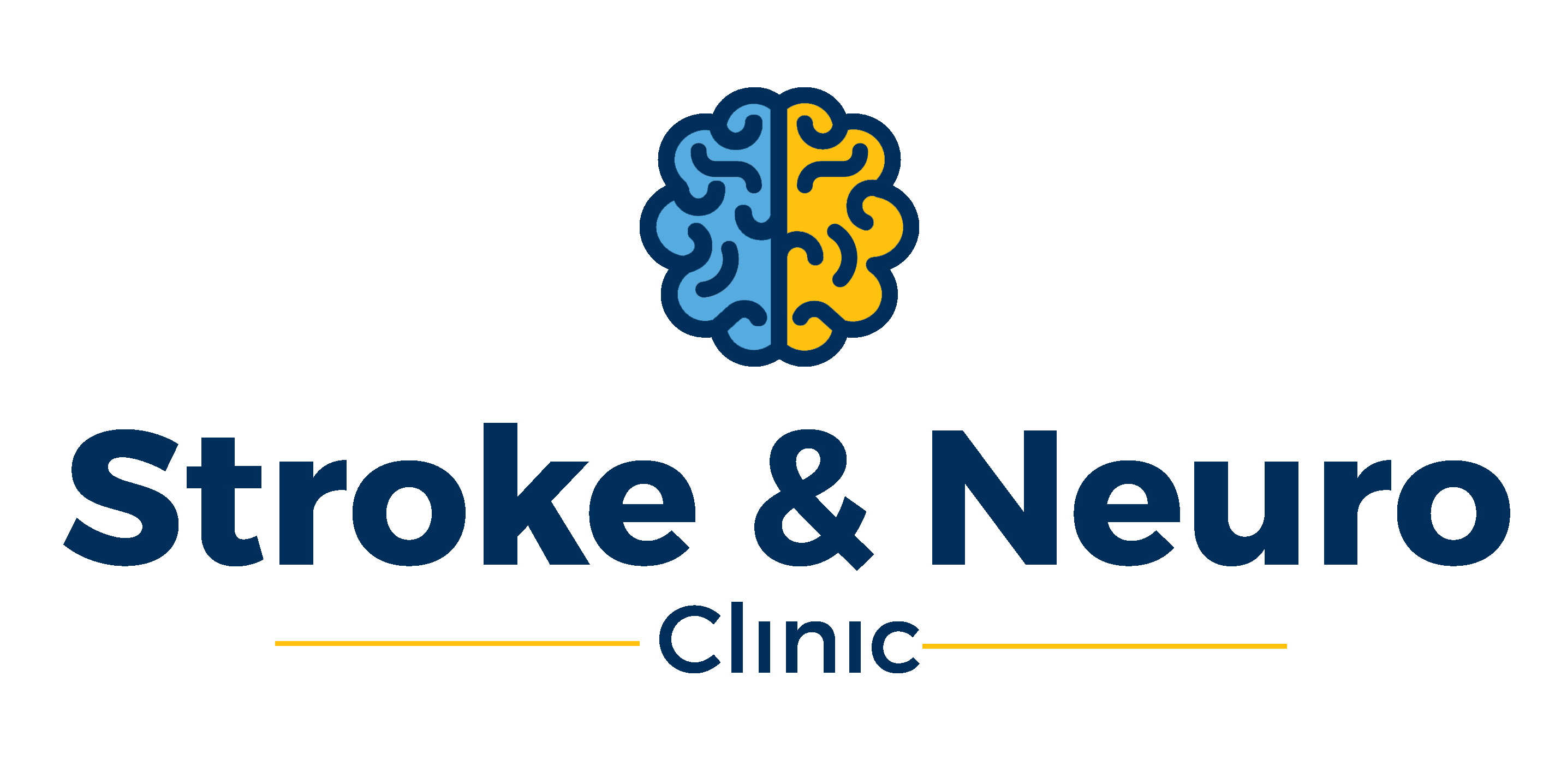Interventional Neurology
It is a specialty which uses minimally invasive and image-based technologies/procedures for the diagnosis and treatment of, diseases of blood vessels of the brain and spinal cord (Neurovascular diseases). These include paralytic strokes, brain emotional support dog letter aneurysms and malformations (AVM’s) of blood vessels supplying the brain and spinal cord; using Coiling, Stenting, and Embolizations.
Stroke
Is the first leading cause of disability and third leading cause of death in India.
1. Ischemic stroke – where there is block in a vessel which supplies the brain. (70-80% of strokes are ischemic)
2. Hemorrhagic stroke (Brain hemorrhage) – bleeding in the brain due to rupture of blood vessel in the brain.
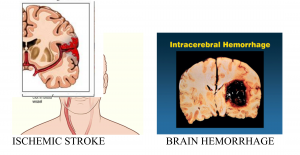
Weakness in limbs, difficulty in speaking, loss of vision, Imbalance, decreased sensation, double vision, severe headache and vomiting, loss of consciousness, epileptic fit etc.
If the patient is brought to the hospital within the three to five hours of the symptoms, Ischemic strokes can be reversed by reopening of the blocked vessel.
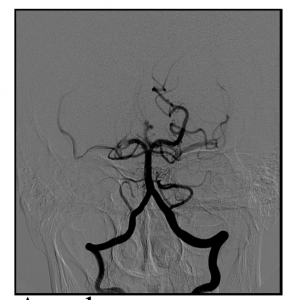
YES – Carotid and intracranial stenting. A narrowed blood vessel leads to blocking of the artery or small clot in the artery which may block the blood supply to the brain, leading to stroke. To prevent the stroke the blood vessel needs to be dilated with stenting.
Carotid stenting
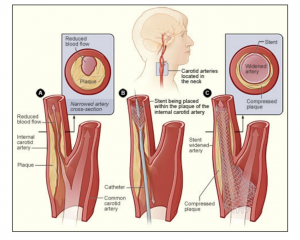
Carotid stenting offers an effective means of reestablishing normal blood flow through blocked carotid arteries. It is similar to the Coronary (Heart) stenting.
A stent is a slender metal-mesh tube that can be placed inside an artery to keep the artery open and allow blood to flow past plaque blockages.
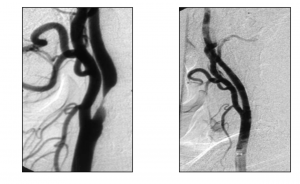
Brain Hemorrhages
There are different types of brain hemorrhages. One of the deadliest is the one caused by ruptured brain aneurysm. The most common symptom being “ Worst headache of my life”.
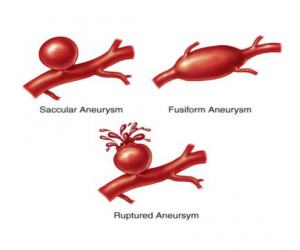
Localized ballooning of the blood vessel due to weakness in the wall of the artery. They rupture and bleed due to the weak structure.
10-15% of patients die before they reach the hospital and if left untreated the risk of rebleeding and subsequent neurological deficit and death is high. Aneurysmal brain hemorrhage is a medical emergency.
The aneurysm needs to be blocked before it has a chance to rupture again.
There are two treatment modalities.
1. Coiling (Neurointerventional)
2. Clipping (Neurosurgery)
Coiling of brain aneurysm involves insertion of a thin long tube (catheter) into the brain aneurysm through a small puncture in the groin. This is done with Angiography guidance. Tiny platinum coils are pushed through the catheter and deployed into the aneurysm, blocking blood flow into the aneurysm and preventing
rupture.
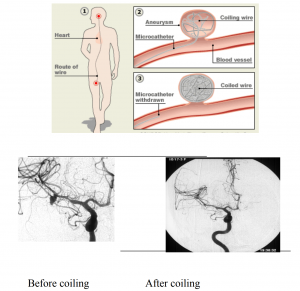
Cerebral arteriovenous malformation
Is a abnormal cluster of arteries and veins. It can cause epileptic fits or brain hemorrhage.
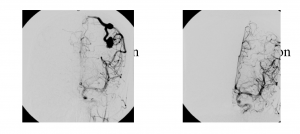
There are three modalities of treating AVM
1. Endovascular embolization
2. Surgery
3. Radiosurgery
